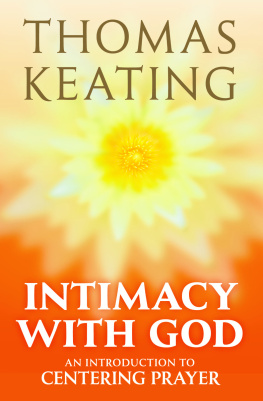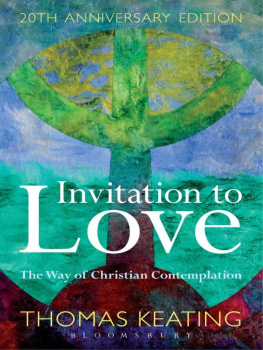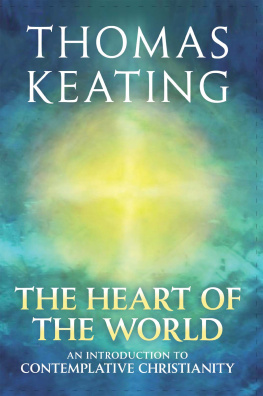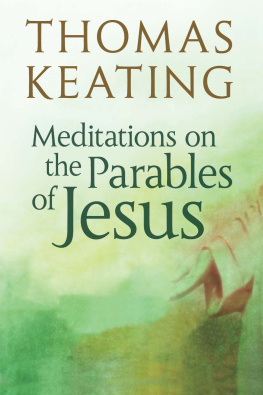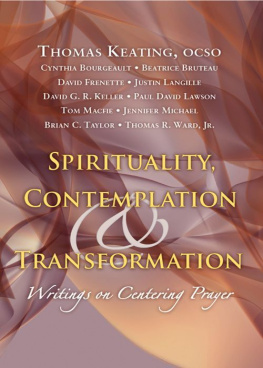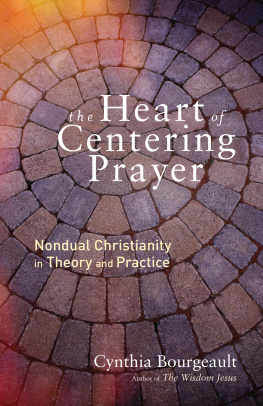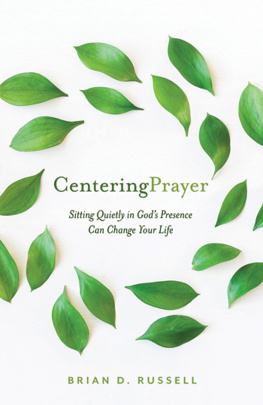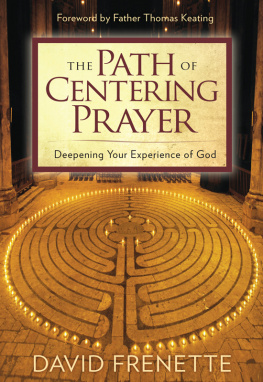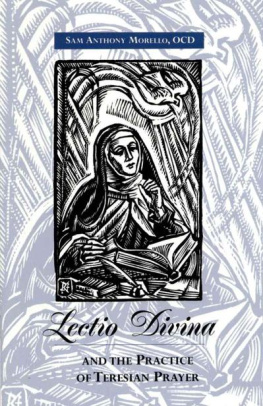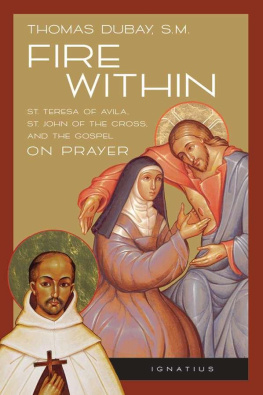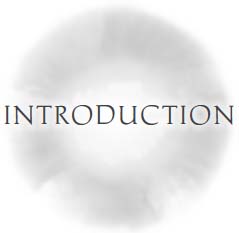OTHER BOOKS BY THOMAS KEATING
Journey to the Center
Meditations on the Parables of Jesus
The Heart of the World:
An Introduction to Contemplative Christianity
Crisis of Faith, Crisis of Love
Open Mind, Open Heart
The Mystery of Christ:
The Liturgy as Spiritual Experience
Invitation to Love:
The Way of Christian Contemplation
Awakenings
Reawakenings
The Kingdom of God Is Like
The Fruits and Gifts of the Spirit
Manifesting God
The Human Condition:
Contemplation and Transformation
The Better Part: Stages of Contemplative Living

The Crossroads Publishing Company
www.crossroadPublishing.com
ISBN 978-0-8245-2529-3 (Revised Edition)
EPUB ISBN 978-0-8245-0232-4
MOBI ISBN 978-0-8245-0234-8
Copyright 1994, 2009 by St. Benedicts Monastery, Snowmass, Colorado
, The Charismatic Renewal, is reprinted, with the permission of Paulist Press, from Contemplation and the Charismatic Renewal, edited by Paul Hinnebusch, OP (Paulist Press, 1986).
All rights reserved. No part of this book may be reproduced, stored in a retrieval system, or transmitted, in any form or by any means, electronic, mechanical, photocopying, recording, or otherwise, without the written permission of The Crossroad Publishing Company. For permissions, please email rights@crossroadpublishing.com.
For information on events or programs of Contemplative Outreach, contact the National Office of Contemplative Outreach Ltd., 10 Park Place, 2nd Floor, Suite 2B9, Butler, NJ 07405.
Tel: 973-838-3384 www.centeringprayer.com
Editor: Sylke Jackson; Proofreader: David Whitworth;
Designer: Eve Vaterlaus
Library of Congress Cataloging-in-Publication Data available from the Library of Congress.
Books published by The Crossroad Publishing Company may be purchased at special quantity discount rates for classes and institutional use. For information, please email sales@crossroadpublishing.com.
CONTENTS
T his book describes the unfolding experience of contemplative life that grows as the false self and the accompanying sense of separation from God recedes. This growing intimacy can become so rooted in the Divine that the experience of separation no longer exists and where there were two, now there is only One.
This oneness or experience of non-duality is addressed in the advanced spiritual traditions of the worlds religions. It signifies the death of the false self and the diminishment and even loss of the sense of separateness, but it is always accompanied by an abiding sense of unity with Ultimate Reality. Unity with Ultimate Reality is usually explained in Christian terms as the grace of the ascension of Jesus, a state of unity with God which is beyond what is called in the Christian contemplative tradition transforming union. The Cistercians, Dominicans, Franciscans, Carmelites, and other religious groups have described the transforming union as a sublime union of love. The unifying force of divine love draws and unites the soul into ineffable experiences of union and forgetfulness of self. God and the soul, however, remain two, since the soul is aware of itself in union with God.
St. John of the Cross in The Living Flame of Love hints at this higher stage of union, but is not explicit. Some of the Beguines of the twelfth and thirteenth centuries, a group of lay persons living in Germany and the Netherlands, wrote explicitly of the transforming union as initiating a further spiritual journey into the experience of unity consciousness that parallels the descriptions of full enlightenment or nirvana found in Buddhism, Advaita Vedanta, or Sufi literature. Here there is no self at all.
Most mystics doubt that this experience can be permanent in this life. However, they affirm that for periods of a few hours or even a few days, we can step away from the reflection of self. At the very least, a greater physiological development of the brain and nervous system would be required for such an evolved state to become permanent. The body has to be prepared to endure such intense and intimate communication with the divine. Life would still require those who are in a permanent state of non-duality to move freely between dual and non-dual awareness just to remain in this world. To conceive of a non-dual stage of awareness as the ultimate goal of spiritual striving may not be as realistic as to live non-dual consciousness inside the active immersion in the ups and downs of everyday life.
In Intimacy with God I do not focus on the sublime height of this development but suggest nurturing an awareness of it, to orient contemplatives to a stage of consciousness that is both dual and non-dual, the pathless path, just as some Eastern traditions affirm that the Absolute is not this, not that or, not one, not two. These paradoxes point to the fact that God is beyond all that exists as well as in all that exists, or more exactly, God is beyond all categories of being and non-being. In Intimacy with God you will enter into the study and experience of the middle stages of the Christian spiritual journey without which the heights are likely to remain in the realm of mystery.
Thomas Keating
St. Benedicts Monastery
Snowmass, Colorado
January, 2009
C entering Prayer is a method of prayer that comes out of the Christian tradition, principally The Cloud of Unknowing, by an anonymous fourteenth-century author, and the writings of St. John of the Cross. It brings us into the presence of God and thus fosters the contemplative attitudes of listening and receptivity. It is not contemplation in the strict sense, which in Catholic tradition has always been regarded as a pure gift of the Spirit, but rather it is a preparation for contemplation by reducing the obstacles caused by the hyperactivity of our minds and of our lives.
The historical roots of Centering Prayer reach back to St. Josephs Abbey in Spencer, Massachusetts, where I was abbot from 1961 to 1981. This was during the time of the first wave of the renewal of religious life after the Second Vatican Council, when many questions were raised for the first time and interreligious dialogue was encouraged by the Holy See. Several of us at Spencer became acquainted with groups from other spiritual traditions who resided in our area. We invited several spiritual teachers from the Eastern religions as well as some ecumenically skilled Catholic theologians to visit and speak with us. Fr. Thomas Merton was still alive at this time and writing extensively about his researches and exchanges in interreligious dialogue. He was one of the most articulate pioneers from the Christian side in the dialogue among the world religions.
In a similar spirit we entertained a Zen master who wished to visit our monastery. We invited him to speak to the community and later to give a sesshin (a week-long intensive retreat). For nine years after that, he held sesshins once or twice a year at a nearby retreat house. During those years I had the privilege of making several sesshins with him. On the occasion of his first sesshin held in our monastery, he put on the Cistercian habit and ate with us in the refectory. We have a picture of him on his seventieth birthday eating a piece of cake while sitting in the half lotus posture.

